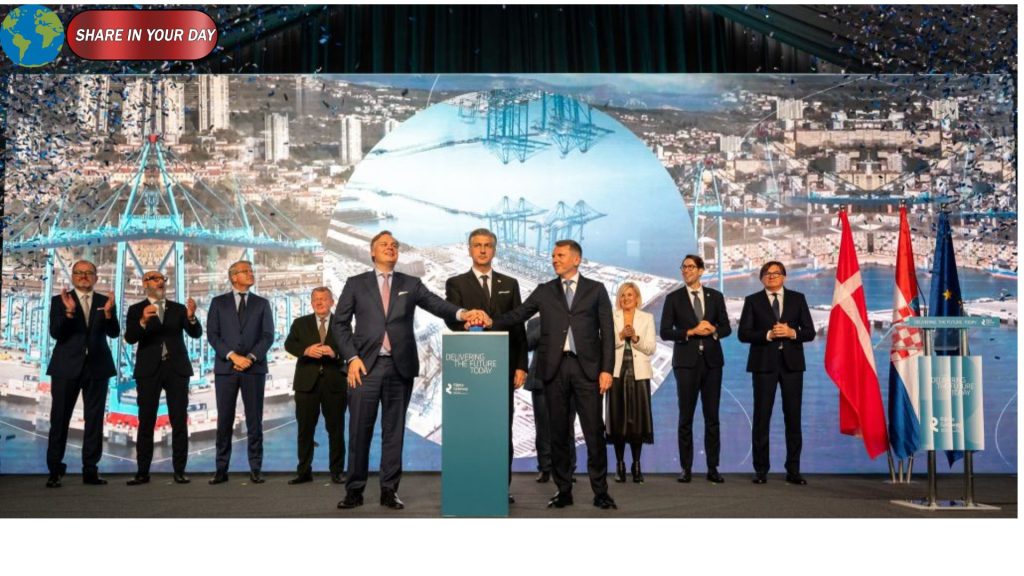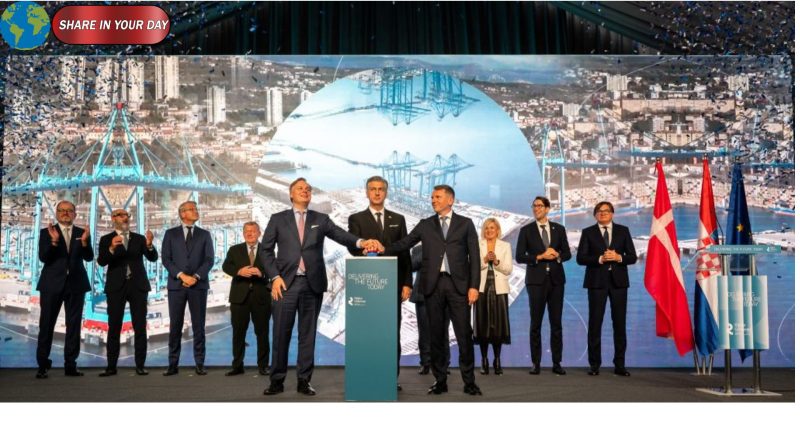Rijeka Gateway Inaugurated: A New Adriatic Entry Point
The recently inaugurated Rijeka Gateway container terminal marks a significant milestone for the Port of Rijeka and for Croatia’s ambitions in the logistics and shipping sector. The facility, the fruit of a joint venture between APM Terminals (51 %) and ENNA Group (49 %), has officially entered operational status, signalling a new chapter in Adriatic supply-chain capacity.
Why It Matters
- The terminal represents one of Croatia’s largest private logistics investments, estimated around €380 million for phase one.
- With a quay length of 400 m and a depth of 20 m in its first phase, the facility is built to serve some of the world’s largest container vessels.
- Annual capacity in the initial phase is around 650,000 TEU, with expansion plans to exceed 1 million TEU.
- The terminal is designed for high automation: remote-controlled ship-to-shore cranes, electric yard equipment, and an emphasis on sustainable operations.
- Importantly, a key part of the project is inland connectivity: rail links to the Central European hinterland are a priority to tap into broader markets.
Strategic Significance
For Croatia, the terminal adds a powerful asset in logistics and transport infrastructure. According to the transport minister at the inauguration, it’s a “historic moment not only for Rijeka … but for the whole of Croatia.”
By offering deeper drafts, larger vessel access, and a modern terminal facility, the Port of Rijeka is now better positioned to compete with other Adriatic gateways. Moreover, efficient hinterland rail and road connections will be critical to exploiting this potential.
What’s Next
- Expansion into phase two will extend the quay to 680 m, increase capacity beyond 1 million TEU and fully realise the terminal’s potential.
- Rail infrastructure is already under review or construction: connecting the terminal more effectively inland is essential.
- Operational milestones: the first commercial vessel (
Al Jasrah, 368 m length) berthed recently, marking commencement of full operations.
Impacts & Benefits
- Local economic impact: Direct employment has already reached ~250 employees and is expected to grow.
- Regional logistics boost: The terminal’s enhanced capacity means companies serving Central and South-Eastern Europe now have a stronger Adriatic option.
- Environmental & digital innovation: With high levels of automation and power from renewable sources, the terminal aims to set a precedent for “green” port facilities in the region.
Conclusion
The inauguration of the Rijeka Gateway is a key moment for maritime logistics in the Adriatic and Central Europe. With modern infrastructure, scale, and ambition, it sets the stage for the Port of Rijeka to enhance its role as a major freight hub. Successful implementation of the subsequent phases — particularly hinterland connectivity — will determine how far this investment translates into long-term advantage.





